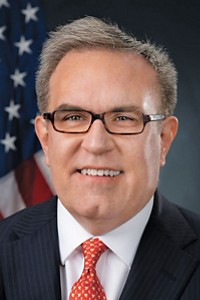Advertisement
Grab your lab coat. Let's get started
Welcome!
Welcome!
Create an account below to get 6 C&EN articles per month, receive newsletters and more - all free.
It seems this is your first time logging in online. Please enter the following information to continue.
As an ACS member you automatically get access to this site. All we need is few more details to create your reading experience.
Not you? Sign in with a different account.
Not you? Sign in with a different account.
ERROR 1
ERROR 1
ERROR 2
ERROR 2
ERROR 2
ERROR 2
ERROR 2
Password and Confirm password must match.
If you have an ACS member number, please enter it here so we can link this account to your membership. (optional)
ERROR 2
ACS values your privacy. By submitting your information, you are gaining access to C&EN and subscribing to our weekly newsletter. We use the information you provide to make your reading experience better, and we will never sell your data to third party members.
Regulation
Protection of confidential data is essential, groups tell U.S. EPA
Agency needs to change its proposal for relying solely on publicly available information, commenters say
by Cheryl Hogue
October 2, 2018
| A version of this story appeared in
Volume 96, Issue 40

Controversy churns around a proposal that would restrict the scientific information the U.S. Environmental Protection Agency relies on for regulations. Industry generally endorses the plan, while health and environmental advocates are attacking it. Yet these opposing factions, along with scientific groups, state regulators, and the U.S. National Academies of Sciences, Engineering & Medicine, agree on one point: They want EPA to continue using at least some types of confidential information without requiring public disclosure of raw data.
EPA’s proposal, released in April, would require the agency to use only data and scientific models that “are publicly available in a manner sufficient for independent validation.” This, the agency says, will increase transparency and boost public confidence in EPA’s decisions. If finalized, the plan will impact the agency’s health-based decisions on air, water, and soil pollution, as well as its safety evaluations of commercial chemicals and pesticides.
The agency received nearly 500,000 written comments on the proposal, an EPA spokesperson tells C&EN. Posted online, a quick glance through the comments shows they are mostly one or two sentences from individuals, often in identical wording, expressing simple support or opposition to the plan and are the results of advocacy group campaigns, as noted in the official docket of comments. The agency also received scores of responses offering detailed criticism or recommendations for changing the proposal.

In their comment, the National Academies’ presidents encourage the agency to seek expert guidance to revamp the plan. National Academies’ reports have generally recommended that scientific data and models used for regulation should be publicly available. But, the presidents warn, “overly stringent requirements for transparency may cause valid evidence to be discarded and thereby pose a threat to the credibility of regulatory science.”
The National Academies’ presidents are far from alone in their concerns. Strict requirements for publicly available data “might negatively impact the EPA’s ability to safeguard human and environmental health,” says a comment from the American Chemical Society, which publishes C&EN. Such limitations could also complicate the agency’s ability to comply with environmental laws, ACS says, since Congress wrote provisions into many statutes mandating that EPA use “best available science.”
Several commenters point out that EPA didn’t explain what deficiencies it is trying to solve through the plan. And the California Environmental Protection Agency says the proposal is based on “a fundamentally flawed assumption” that public availability of data determines its scientific merit.
Many commenters worry that the proposed change would stop EPA from relying on epidemiology studies to set environmental standards. Ten U.S. senators and, separately, a group of academics and officials from Harvard University point out that data from these studies, which involve medical patients, are protected under the 1996 Health Insurance Portability & Accountability Act.
In addition, federally funded research involving human subjects must abide by what’s called the Common Rule. Among other things, the Common Rule requires researchers to obtain informed consent of the research subjects, which typically involves promises of confidentiality, the Harvard group says.
Thus, requiring the agency to rely only on studies whose underlying data is publicly available “would bar EPA from considering many vital public health studies that are based on confidential patient information that cannot be legally or ethically disclosed,” the Environmental Defense Fund says. Yet such studies, the advocacy group says, “have been rigorously vetted using time-tested approaches that are widely accepted in the scientific community.”
Prohibiting the agency from considering public health studies, several commenters point out, would impede EPA efforts to address both known and emerging environmental risks. Such risks include contamination of drinking water with per- and polyfluorinated alkyl substances, the Harvard group and the Union of Concerned Scientists say. That’s because the agency would be forced to ignore published papers that link human exposure to one of these chemicals, perfluorooctanoic acid, to health effects such as high cholesterol, thyroid disease, and testicular cancer.
EPA’s plan would give industry more ammunition to fight environmental regulations, others say. “We view this proposal, and its requirement of making publically available data for ‘independent validation,’ simply as a means of providing industries concerned with various studies an opportunity to reanalyze data to reshape or recast conclusions drawn by researchers and subsequent peer reviews, and to allow EPA to censor important studies without justification,” say Minnesota’s Pollution Control Agency and the state’s Department of Health.
Industry is also concerned about the proposed data transparency requirement, although for a different reason. Companies want to ensure that the confidential business information (CBI) they supply to EPA remains under wraps. The National Mining Association and North American Metals Council say the proposal isn’t clear on how the requirement for publicly available data would apply to proprietary information that industry supplies to EPA.
The American Chemistry Council (ACC), which represents U.S. chemical manufacturers, points to health and safety data, such as toxicity studies on a commercial chemical, as an important example of CBI. A company that pays to generate this information doesn’t want to give its competitors an edge by making such data public, ACC writes. Except for registration of pesticides, EPA doesn’t routinely require companies to submit underlying data for health studies they provide to the agency.
ACC believes that publicly releasing a final study report while keeping the underlying data confidential “would, in most circumstances, be an effective way to make relevant information publicly available about studies and data EPA may rely on, but which must be protected,” the chemical industry group says. “In these situations, EPA can access the underlying data to confirm the methods, models, and approaches are based on validated procedures, accessible data, etc.”
The United Steelworkers union, which represents workers in some chemical plants, asks EPA to avoid creating a double standard for confidential scientific data. “While we support protections for justifiable claims of CBI, any requirements that EPA puts on research must be evenly applied,” the labor group says. “The agency should not provide a carve-out for industry data.”
In other comments, EPA received suggestions on ways to make human health data in epidemiology studies public while protecting patient confidentiality. For example, ACC cites examples of health care and Medicare claims data that are being unlinked from patient identification.
But many commenters say this practice is expensive. “It appears EPA will either have to spend millions of dollars to format data to make it publicly accessible or limit the total number of studies used to make regulatory decisions because of the costs associated with evaluating them,” the Alaska Departments of Environmental Conservation and Health & Social Services say.
The American Cancer Society, which sponsored one of the major particulate-matter health studies EPA has used for regulation, sees problems for researchers who want to provide useful and usable data to EPA. “We are not aware of any way to create a de-identified dataset that would protect the confidentiality of our participants and prevent re-identification, while at the same time provide sufficient detail to permit a true replication of our research studies of relevance to EPA,” the cancer society says.
As another alternative to publicly accessible data, the Texas Commission on Environmental Quality suggests EPA consider a formal request-and-approval process for qualified researchers to obtain access to protected data. This could apply to data kept confidential for business or patient privacy reasons.
In addition, EPA’s transparency proposal allows for exceptions so the agency could use studies that don’t have underlying data that is available publicly. Those exceptions could be made both ways: when some data do not meet the transparency criteria but nonetheless would prove helpful for making a regulatory decision, or when the agency wishes to rule out publicly available information for some reason.
“The true tone of this proposed rule will be set through exception determinations that either exclude certain evidence or justify using non-accessible data,” the Texas commission says. “Exceptions will also ensure that regulatory action continues to take place in the event that the EPA has a statutory requirement to make a decision using data that are not available (e.g., an older study for which the original dataset no longer exists) or cannot be released (e.g., confidential business information).”
However, the proposal would place authority for granting such exemptions in the hands of one person: EPA’s administrator, the person nominated by the president and confirmed by the Senate to head the agency. The Texas commission and other commenters flatly oppose empowering a single individual to make such decisions.
The National Association of Clean Air Agencies, a group of state regulators, says such a practice “would have the effect of interjecting the appearance of politics into what should be a fair and unbiased scientific assessment. It is an opportunity for arbitrary decision making and is insufficient to protect against the exclusion of relevant, valid scientific studies.”
Advertisement
The National Academies’ presidents say decisions about exemptions should be based on formal agency guidance and not according to criteria established by a single EPA employee. Instead, the agency can create a clear and systematic process for determining which studies warrant exemptions.
The Texas commission suggests the job of granting exemptions should be left to a third-party entity such as the agency’s Science Advisory Board. This independence, the commission explains, “provides greater trust that decisions were reasonable, objective, and unbiased.”
EPA will review the hundreds of thousands of comments through the autumn before determining “a timeline for a decision,” the agency spokesperson tells C&EN. Meanwhile, the agency’s Science Advisory Board, which was surprised by the proposal, in June formally asked to review it. Acting Administrator Andrew Wheeler hasn’t responded to the request yet.




Join the conversation
Contact the reporter
Submit a Letter to the Editor for publication
Engage with us on Twitter